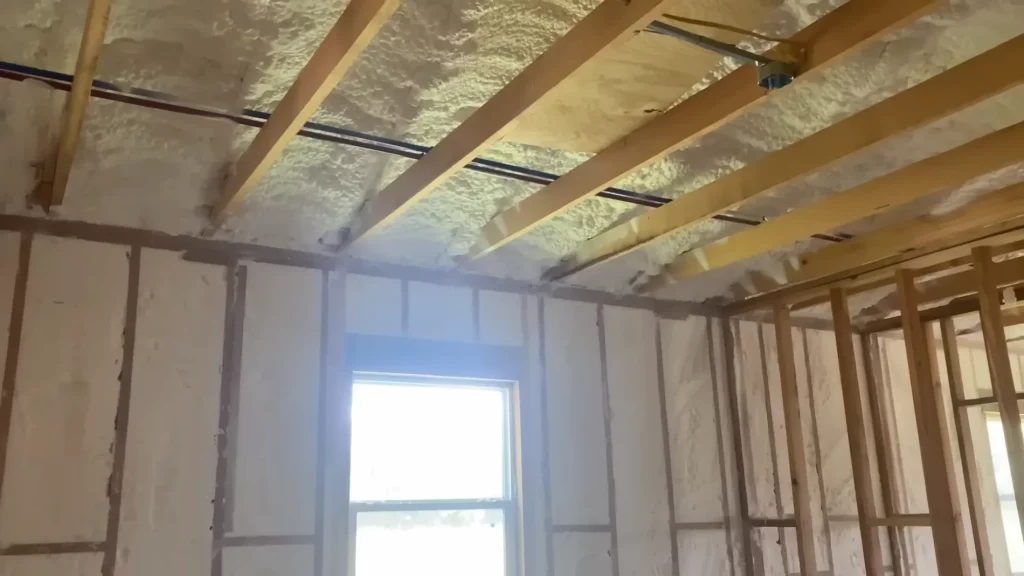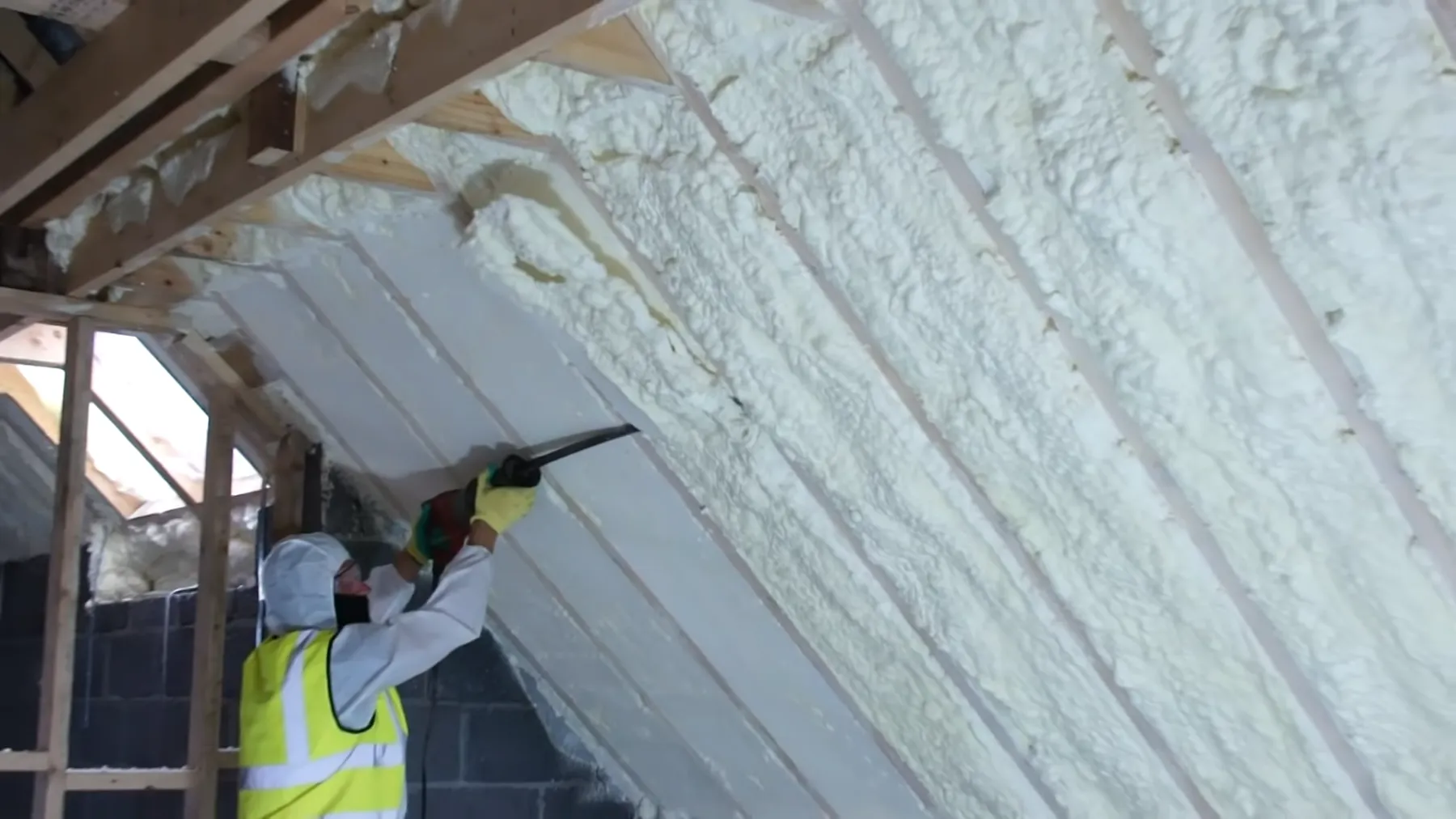A professional insulation system creates a tight barrier that stops heat from escaping in winter and blocks hot air in summer. This setup keeps indoor spaces at the chosen temperature with less effort from heating and cooling units, providing steady comfort year-round for homeowners in Smithfield, NC, by reducing air leaks and handling the area’s humid climate well.
This article covers how such systems work, their advantages in local conditions, and steps to choose one. Readers gain clear facts to make informed choices about home comfort. Information draws from years of handling insulation projects in central North Carolina, where climate shifts demand reliable setups.
Insulation Fundamentals
Insulation acts like a shield for homes. It fills walls, attics, and floors to slow down heat transfer. Materials such as spray foam expand to seal gaps, unlike loose-fill options that settle over time.
In Smithfield, homes face hot, humid summers and chilly winters. A pro system matches these patterns by providing even coverage. For example, closed-cell spray foam resists moisture, a key factor in this region.
Bonus Tip
Check attic ventilation alongside insulation. Poor airflow traps humidity, which leads to mold in North Carolina’s damp weather.
Understanding these basics highlights the practical advantages of professional insulation systems.
Key Benefits for Temperature Stability
These systems cut energy use by up to 20% in typical homes, per U.S. Department of Energy. That means lower bills while keeping rooms comfortable.
They also quiet outside noise, adding to a peaceful indoor setting. In practice, sealed walls prevent drafts that make temperatures swing.
Market data shows North Carolina households spend about $1,500 yearly on heating and cooling. Proper insulation drops that figure through better efficiency, according to EIA.
Local Climate Factors in Smithfield
Smithfield experiences average highs of 90°F in July and lows around 30°F in January. Humidity often tops 70%, which strains standard HVAC setups.
A professional insulation system adapts by blocking moisture and maintaining air barriers. This prevents discomfort from excess humidity during peaks and keeps warmth inside during cold snaps.
Local building codes require R-38 attic insulation values, higher than in drier areas. Meeting these standards ensures long-term performance against the area’s weather.
Bonus Tip
Opt for materials rated for high humidity. They hold up better and avoid sagging, based on installs in similar Johnston County homes.
| Insulation Type | R-Value per Inch | Moisture Resistance | Best for Smithfield Homes |
|---|---|---|---|
| Fiberglass | 2.9-3.8 | Low | Budget attics, but needs vapor barriers |
| Cellulose | 3.1-3.8 | Moderate | Walls in older structures |
| Closed-Cell Spray Foam | 6.5 | High | Humid climates, full sealing |
| Open-Cell Spray Foam | 3.5 | Low | Soundproofing with less density |
This table compares options based on performance data from Oak Ridge National Laboratory.
Things to Consider Before Making a Decision
Assess current home setup first. Older homes in Smithfield may have outdated materials that trap heat poorly.
Energy audits reveal weak spots, like uninsulated crawl spaces common here. Budget for professional assessment to avoid uneven results.
Long-term savings matter too. Initial costs range from $1,500 to $5,000, but rebates through Duke Energy cut that, per state programs.
Think about health impacts. Good insulation reduces allergens by sealing entry points for pollen and dust in the rural area.
Bonus Tip
Schedule installs during milder seasons, like spring or fall. This avoids peak heat stress on workers and homes.
Common Questions
How long does insulation installation take?
Most projects finish in one to two days for average-sized homes, though larger properties may require additional time.
Does insulation affect home resale value?
Yes, insulation can boost resale value by 5–10% in energy-conscious markets like North Carolina, supported by real estate data and buyer demand for efficiency.

Frequently Asked Questions
How does insulation lower energy bills in humid areas?
It seals leaks that let humid air in, forcing AC units to work harder. Savings average 15% in the Southeast, per regional studies.
Is spray foam safe for families?
Approved types meet strict EPA standards and emit no harmful levels after curing. Always choose certified installers.
What R-value suits Smithfield winters?
Aim for R-30 to R-49 in attics to match local code and handle mild but damp colds.
Can insulation fix uneven room temperatures?
Yes, by creating uniform barriers, it evens out hot and cold spots across the house.
How often should insulation get inspected?
Every 10 years, or after major weather events like hurricanes common in NC.
Key Takeaways
Professional insulation systems deliver steady temperatures by sealing homes against Smithfield’s variable weather. They save energy, improve comfort, and align with local needs.
Evaluate your home’s current setup, consider climate demands, and weigh long-term benefits. Match choices to specific goals for lasting results.
Next Steps for Better Home Comfort
Homeowners ready to explore options can reach out to Raleigh Excel Spray Foam Insulation. Send an email to [email protected] or call (919) 301-9435. Discussions focus on tailored advice for local conditions without commitment. This step helps clarify fits for individual properties.
Sources
- U.S. Department of Energy – Government resource on insulation benefits and energy savings for homes.
- EIA – U.S. Energy Information Administration report on residential energy costs in North Carolina.
- Oak Ridge National Laboratory – Scientific study comparing insulation types and their thermal performance.




